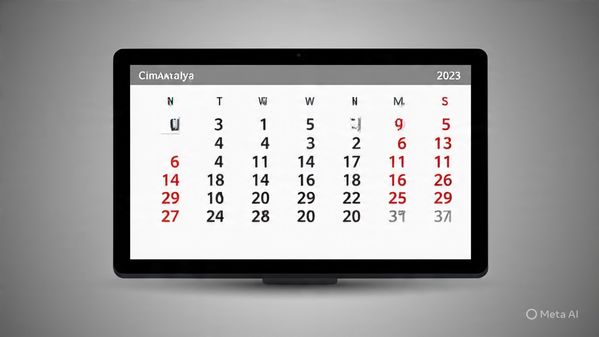Skip the Germs: Your Practical Guide to a Cleaner, Healthier Everyday Life
In a world where shared spaces, surfaces, and social habits make exposure to bacteria almost unavoidable, one simple mantra stands out as both a survival tip and a lifestyle choice: skip the germs.
But this isn’t just about washing your hands more or stockpiling sanitizer. It’s about living smarter, creating cleaner habits, and building a more resilient routine that helps protect you and your loved ones—without becoming obsessive. Whether you’re navigating public transport, prepping meals at home, or using your phone 100 times a day (yes, that’s the average), the real question becomes: are you unknowingly inviting germs into your daily life?
This in-depth guide breaks down the modern microbial minefield and gives you actionable, evidence-backed strategies to confidently skip the germs—without skipping life.
Why “Skip the Germs” Isn’t Just a Catchphrase Anymore
From Casual Awareness to Critical Routine
A decade ago, the phrase “germophobe” had a quirky, almost comedic ring to it. But since the global pandemic, our collective relationship with germs has radically shifted. Sanitization became a shared priority, hand hygiene evolved into a cultural norm, and personal space got a whole new meaning.
Yet, despite this shift, many people still fall back into old habits—reusing face masks improperly, ignoring high-touch surfaces, and underestimating how easily germs can spread.
Germs Are Sneakier Than You Think
You don’t have to be rolling in dirt to get sick. Most infections stem from high-touch surfaces and common interactions: shaking hands, touching doorknobs, sharing devices, or even using an elevator button. In fact, research published in the Journal of Hospital Infection found that some viruses can survive on surfaces for up to 28 days under the right conditions. Yes—four full weeks.
The True Cost of Getting Sick
Aside from the obvious discomfort, illness carries a tangible cost. Missed workdays, medical bills, lowered productivity, and reduced immune resistance all stack up. A single bout of the flu can cost an individual an average of $130 to $250 in the U.S., not counting indirect costs. For families or small business owners, the stakes are even higher.
The Germ Hotspots You’re Probably Overlooking
Your Smartphone: A Germ Magnet in Your Pocket
Multiple studies, including one from the University of Arizona, have shown that smartphones can carry 10 times more bacteria than most toilet seats. The reason? They’re always with us—at meals, in bathrooms, on public transport—and they rarely get cleaned.
Pro Tip: Clean your phone once a day with alcohol-based wipes or UV sterilizers (now widely available and effective).
Kitchen Sponges: Dirtier Than You Think
Ironically, the tool we use to clean our dishes often harbors some of the worst bacteria. Sponges can collect E. coli, Salmonella, and Staphylococcus, and microwaving them might not be enough.
Skip the Germs Tip: Swap out sponges every 1–2 weeks or switch to silicone scrubbers that are easier to disinfect.
Elevator Buttons & Door Handles
Especially in office buildings and shared spaces, these surfaces are touched by hundreds daily. Disinfectants may be used intermittently, but you never know who touched it last.
Actionable Advice: Use your knuckle for elevator buttons, carry a barrier tissue, or push doors with your forearm when possible.
Smart Habits to Truly Skip the Germs (Without Going Overboard)
1. Build Micro-Hygiene Into Your Day
Hygiene shouldn’t interrupt your routine—it should be your routine. Instead of treating cleanliness as a reactive measure, make it proactive.
-
Wipe Down Workspaces: A quick desk wipe in the morning and before lunch keeps bacteria at bay.
-
Disinfect Reusable Items: Bags, headphones, water bottles, and lunchboxes should be cleaned weekly.
-
Sanitize Handrails: Especially if you walk with children or older adults who may touch them frequently.
2. Don’t Just Wash—Wash Right
Washing hands is only effective when done correctly. That means 20+ seconds with soap and water, especially:
-
After using the bathroom
-
Before eating or prepping food
-
After coughing, sneezing, or touching your face
A CDC study revealed that only 5% of people wash their hands long enough to kill harmful germs. Don’t be in that 95%.
3. Upgrade Your Air Game
We often forget that airborne germs play a major role in illness transmission. Poor indoor air circulation and HVAC systems without filters can worsen this.
Skip the Germs Air Protocol:
-
Use HEPA filters at home or in small office spaces.
-
Open windows for fresh air when weather permits.
-
Use indoor plants like spider plants or peace lilies—nature’s air purifiers.
Real-World Case: A School That Skipped the Germs Successfully
In 2024, a mid-sized primary school in Seattle introduced a “Germ-Free Fridays” initiative. Every week, students and staff:
-
Disinfected desks and lockers
-
Sanitized shared tech devices
-
Used posters and games to learn about hygiene
Results after one semester? A 38% drop in reported absenteeism due to illness, according to district records. The program was simple but effective—proving you don’t need a hospital-grade strategy to see real results.
Comparing Common Sanitizing Options
| Method | Pros | Cons | Best For |
|---|---|---|---|
| Alcohol-based wipes | Convenient, kills 99.9% germs | Not eco-friendly, drying to skin | Phones, keyboards, remotes |
| UV sanitizers | Chemical-free, reusable | Upfront cost, slower process | Phones, toothbrushes |
| Bleach solutions | Kills strong pathogens | Harsh, can damage surfaces | Bathroom, floors |
| Natural cleaners | Non-toxic, eco-friendly | May miss stronger pathogens | Daily light cleaning |
2025 Hygiene Trends Worth Following
1. Wearable Hand Sanitizers
Stylish bracelets and keychain models that deliver gel on the go are gaining traction. They’re refillable and convenient—especially for kids and commuters.
2. Self-Sanitizing Surfaces
New materials with built-in microbial resistance are being used in countertops, door handles, and public benches.
3. Contactless Everything
From grocery stores to public restrooms, touchless tech is here to stay. Think voice-activated elevators, app-controlled door access, and AI-based cleaning bots.
Skip the Germs Without Missing Out
Let’s be real: you can’t live in a bubble. But you can take back control of your personal hygiene space without sacrificing convenience or peace of mind. It’s about knowing where germs hide, how they spread, and the small but powerful steps you can take to sidestep them. Whether you’re a parent, teacher, commuter, or just someone who values good health, the choice to skip the germs is both empowering and essential.
FAQs: Let’s Clear Up the Grimy Details
Q1. How often should I disinfect my phone if I want to skip the germs?
A: Ideally, once a day. Especially if you take it into the bathroom or set it down in public places. Use alcohol wipes or a UV sanitizer for best results.
Q2. Is it bad to use hand sanitizer all the time?
A: Overuse can dry out your skin and reduce its natural protective barrier. Use sanitizer when soap and water aren’t available, but moisturize regularly and opt for formulas with aloe.
Q3. Are homemade cleaners effective for killing germs?
A: Some are. Vinegar and baking soda work for general cleaning, but for disinfecting, you’ll need something stronger—like a hydrogen peroxide mix or commercial-grade solution.
Q4. Can skipping the germs make my immune system weaker?
A: No. Good hygiene doesn’t compromise immunity. You’re avoiding unnecessary exposure, not eliminating all microbes. Your immune system still encounters plenty through normal living.
Q5. Do natural cleaners actually work, or are they just a gimmick?
A: It depends. Some natural cleaners are excellent for daily maintenance but might not kill tougher pathogens like norovirus or MRSA. Always read labels and supplement with disinfectants when needed.
Q6. What’s the best way to teach kids to skip the germs without scaring them?
A: Make it fun. Use songs for handwashing, sticker rewards for clean habits, and show them how “germ detectives” spot dirty surfaces. Education works better than fear.
Final Thoughts: Your Clean Life Starts with Small Changes
You don’t need a hazmat suit to skip the germs—just awareness, consistency, and a few smart upgrades to your daily habits. The goal isn’t perfection. It’s progress. And every disinfected phone, washed hand, or sanitized desk brings you closer to a cleaner, healthier life.
So the next time you reach for that door handle or hand over your phone—pause for a moment. Think: can I skip the germs here? Chances are, the answer is yes.
Start now. Your immune system will thank you later.


![Swimsuit Edition [ABBB] - 1.20 21 Swimsuit Edition - Chapter](https://newzio.pro/wp-content/uploads/2025/07/AQN_u332c2tRFy_6zmICQjgeTpRyLz0oTYkJoZAwlw8OJZdfnCvwKawGC-HWhremQ33DTul7DJAR5q1zgH0Y2X59zraz-AleA5Ddx6HKSI-KGUJiB4FwDCM2e_UfRPAgFt7sa2KelpwXkczEnPTwbXyk1RSP.jpeg)


Leave a Reply